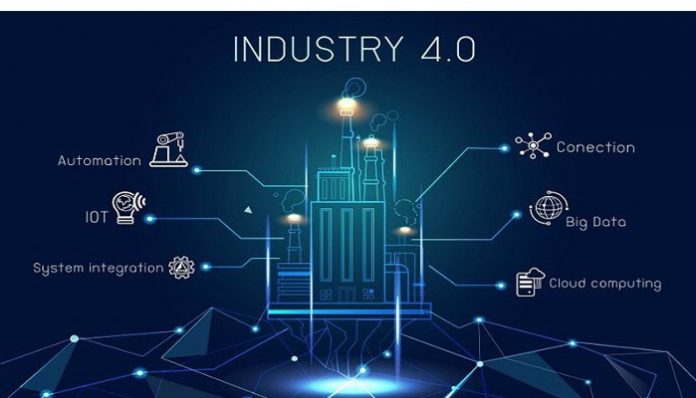Industry 4.0 is already influencing sectors like manufacturing, supply chain management, construction, shipping, etc., and shall impact all the aspects of our day-to-day activities. Industry 4.0 is gaining popularity due to rapid improvements made in the cyber-computing capabilities in the last few decades. The line between the virtual and the real world getting blur by advanced technologies like Artificial Intelligence (AI), Internet of Things (IoT), and others so as to create an interoperable platform between Information Technology (IT) and actual physical operations. The term Industry 4.0 refers to the leveraging of cyber-physical domains in association with the latest technologies like AI, IoT, Cloud computing, AR, 3D printing, etc. to enhance productivity. It is truly considered to be an unrestrained technology.
With the very first incorporation of steam-generated power and mechanization of production methods, the 18th century marks the genesis of the world’s first industrial revolution, popularly called industry 1.0. This was an important transition from manual labor-based industry to the use of steam-powered engines to increase human productivity. The textile industry was one of the early beneficiaries of this mechanization, with the steam engine-powered weaving looms replacing the traditional handmade textile products for mass production.
The fourth industrial revolution, Industry 4.0 was triggered by the hi-tech innovations which brought the cyber-physical systems together i.e. smart machines capable of exchanging real-time information over the industrial internet of things (IIOT) for the decision-making process. Industry 4.0 is the purview of various modern technologies like Cloud Computing, IoT, Artificial Intelligence, Big Data science, 3D printing, 5G, Drones, Communications, etc., all anchorage for the ability to enhance the productivity in the manufacturing processes.
Today, machine-machine real-time communication is possible over and above the previous human-machine interactions. The visualization and simulation techniques have seen a leap with an increase in the processing power of the chips. Various complex, customizable and modular products can be designed and directly communicated to the machines to follow. Thus, the embedded systems, factories, and workers connect over the IoT to work together in a cyber-physical environment. As part of Industry 4.0, the robots when backed with AI and IoT are more flexible and can make decisions in a factory environment. We have Cobots i.e. Collaborative Robots participating intrinsically with human activities, and their role is now more than being stand-alone machines doing repetitive tasks.
AR (Augmented Reality) technology is a step ahead of the popular Virtual Reality (VR) technique. It is a combination of both, the real world and the digital world brought together to enhance its virtual world applicability. With tools like Google Glass, the information is overlaid on the user’s field of view to allow him to gain more insight about an object they are looking at (like technical parameters, tolerance limits, etc.).
The implementation of Industry 4.0 requires not only a horizontal factory-to-factory integration but a vertical Integration to connect the hierarchies of a production line. Overall, the intelligence of the smart factory is achieved with the convergence of technologies of information processing as part of a digital ecosystem.
Indian Industries 4.0
In 2018, the World Economic Forum set up its Centre for the Fourth Industrial Revolution in India to work in collaboration with the GoI. The National Institute for Transforming India (NITI) Aayog is the designated nodal agency to interact with the World Economic Forum for elaborating the new policy frameworks for emerging technologies. The GoI has already made the enabling policy framework and set up incentives for infrastructure development on a PPP (Public-Private Partnership) model. Samarth Udyog Bharat 4.0 (Smart Advanced Manufacturing and Rapid Transformation Hubs) under the Department of Heavy Industries (Ministry of Heavy Industries & Public Enterprises) is India’s initiative to push for Industry 4.0 implementation with an aim to propagate technological solutions to Indian manufacturing units by 2025 through steps like awareness program, training, demo centers, etc. The industry, academia, and international cooperation in the field of technologies related to Industry 4.0 is the policy formulated by the government. India’s National Manufacturing Policy (NMP) has been promulgated which aims at enhancing the share of manufacturing in GDP to 25% and Industry 4.0 is the only way ahead to achieve this task.








